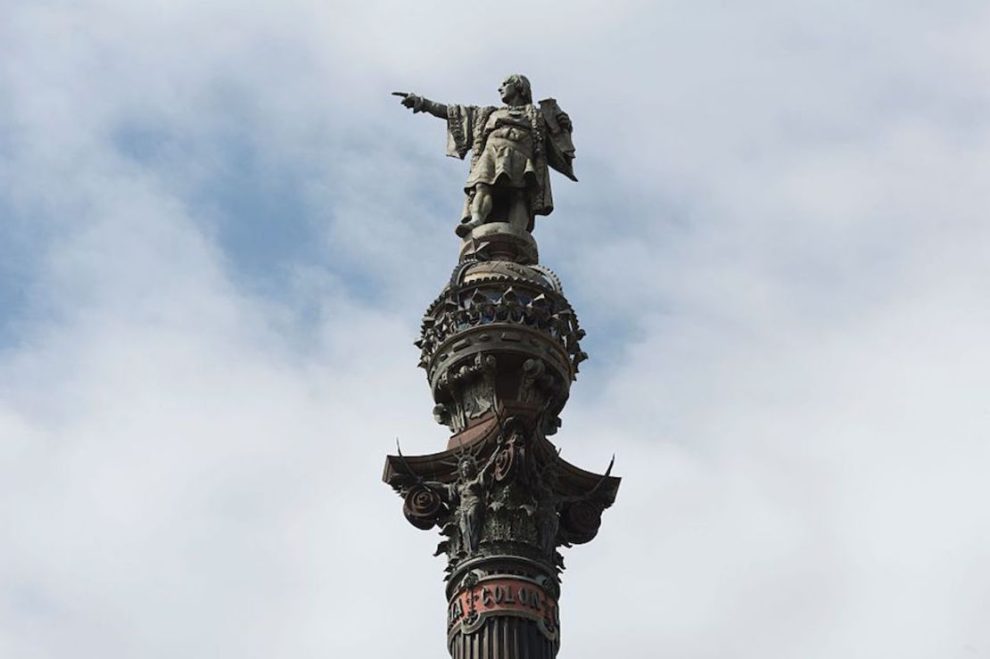( Spanish) – In October many countries celebrate a similar holiday, although they do not agree on the name. In the United States it is celebrated on the second Monday in October, and is known as Christopher Columbus Day. In Latin America it is celebrated on the 12th of the month and is called Columbus Day, and in Spain, although it is celebrated on that same date, it is known as Hispanic Heritage Day or, formally, National Holiday Day.
Something that countries do agree on is the controversial origin of the holiday. It arose to celebrate the arrival of Christopher Columbus to America, the discovery, as it is known, but the fact is that there were already societies on the new continent, and many advocate that that heritage be remembered, and not that imposed by European explorers.
This year, at least a dozen cities in the United Statesincluding San Francisco and Cincinnatidecided to stop celebrating Christopher Columbus Day and would instead celebrate Indigenous Peoples’ Day.
The changes — which started in cities like Seattle, Minneapolis and Albuquerque and have expanded to other counties and school districts — build on recent efforts to put a different focus on Italian Explorer Day.
“Indian Communities Day represents a shift in consciousness,” says Dr. Leo Killsback, a citizen of the Northern Cheyenne Nation and assistant professor of American Indian Studies at Arizona State University.
“This recognizes that Indigenous people and their voices are important in today’s conversations.”
Look here 12 myths and truths about Columbus and his arrival in America:
1. Christopher Columbus discovered that the Earth was not flat
The myth says that Columbus was lying on the meadow and saw that the ships were getting lost hiding behind the horizon, so he came to the conclusion that the Earth was not flat and that is why he wanted to undertake his journey.
It’s not true.
The ancient Greeks proved that the Earth was round 2,000 years before Columbus was born. They even used the Earth’s shadow during an eclipse to calculate the planet’s circumference.
2. Christopher Columbus was Italian
There is always talk of the ‘Italian explorer’, and this is partly true, according to modern maps. Columbus was born in Genoa in 1436 (or 1456, it is not known for sure). Today the city is part of Italy, but the country was founded in 1815, almost 400 years after the explorer’s birth.
3. The explorer was a great calculator and geographer
William Phillips, professor of history at the University of Minnesota and co-author of ‘The Worlds of Christopher Columbus’, says Columbus was terrible at math and geography. “He was unable to obtain funding for a long time because his calculations were wrong, he thought the Earth covered more of the planet than it actually does, and he believed that Japan was about 2,400 kilometers from the coast of China.” (It is a little more than 1,200 kilometers).
4. The indigenous people were surprised by the arrival of Columbus and his crew
The story that is told to children in most schools is that upon the arrival of Europeans to the American shores, the local indigenous people received them with amazement and admiration, marveling at their ships, their clothes and their objects.
Yes, it probably surprised them, but they were used to foreign arrivals from other parts of America, according to LeAnne Howe, a professor of American literature at the University of Georgia. Columbus did not seem so different to them, since it was common for other settlers to reach its coasts and in fact stay there for seasons.
5. America had primitive societies before discovery
No, although indigenous settlements are often described as simple or primitive.
According to Howe, the places where they lived had been built decades or even centuries before the arrival of Columbus. They were the site of rich and complex societies.
6. Columbus sailed the seas for his love of exploration
It’s not entirely true. Columbus did not set out to sea with his three ships to discover new lands, says David M. Perry, professor of history at Dominican University of Illinois. The truth is that he was in search of Asian gold and ended up bringing cotton and slaves back to Europe.
7. Columbus discovered America
Fake. The American continent is named after another explorer, the Italian Americo Vespucio, to whom the first arrivals in the new world are attributed.
8. Columbus was a brave explorer
Although his intentions were not so selfless, although he enslaved the indigenous people and claimed the property and lands that belonged to them, it cannot be ignored that the explorer had courage, says Perry. Getting in front of a fleet of ships and heading towards what many thought was a huge ocean where he would meet his death was brave.
9. The arrival of Columbus to America had negative effects on the indigenous people
TRUE. Not only because of slavery, but also because as a result of the diseases that the explorers brought, the indigenous population was drastically decimated by epidemics, says Perry.
10. Columbus always had support from the queen of Spain
No, nor was it a mission commissioned by the monarch. As explained in point 3, due to problems in his calculations, Columbus had many problems when it came to obtaining financing for his trip, until he managed to convince the Spanish queen.
11. Columbus said he had arrived in a new world
Columbus was very stubborn, Professors Howe and Phillips agree, for that reason, despite his bad calculations, he never gave up. That same stubbornness made him never accept that he had not reached Asia.
12. Columbus’ voyages changed history
Yes, their voyages have an undeniable historical impact because they not only opened the era of exploration in that part of the world, trade and the eventual colonization of America, but they determined many things on the continent, from language and religion to the customs and traditions, says Perry.
This article was originally published on October 12, 2016.














Add Comment